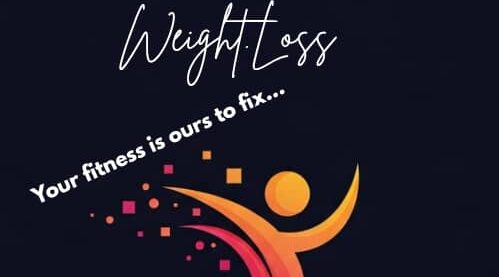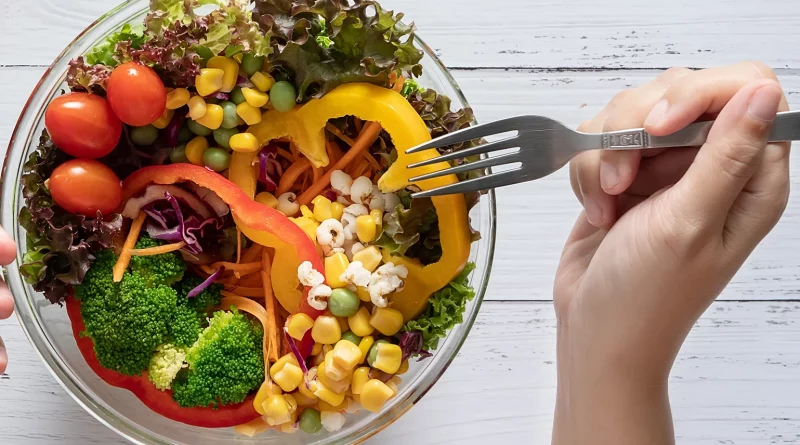Easy Weight Loss – Fight Fat With Fat!
What if I told you that you could lose weight while still eating delicious food rich in fats?
I have struggled all my life with abdominal fat. It has been a lifelong issue because even though the rest of my body was slim, I have had a bit of abdominal fat since kindergarten when I was chosen to read a “round robin” poem. I was traumatized in first grade when a boy called me “Chubby Checkers” (a popular singer in the 1960s who was slightly overweight). Even as a raw foodist, I couldn’t get rid of the “apple shape,” or have a relatively larger belly than hips.
That is…until I discovered the secret of fighting fat with fat. I have now, at age 53 and after menopause, reached my ideal weight for the first time since high school. I can proudly wear designer jeans, and dress like younger women. And best of all, I no longer struggle to keep it off. I have learned the secrets of fighting fat with fat.
In the 1980s there was a theory that we could eat all the carbs we wanted and that these would not be stored as fat. Fat on the body came mostly from fat in the diet, the theory went. And there were studies to prove this theory, of course. So the idea was to eat as little fat as possible.
While there is some truth to that, in that fat in the diet can more easily be stored as body fat, those who adhered to this theory went overboard in undereating essential fatty acids. They suffered from depression, fatigue, PMS, and all sorts of maladies. Put simply, your body needs fat. Next to water and oxygen, fat is the most important component of the body.
We now know that we need fat to burn fat. We need good fats to boost our metabolism. Fats are needed to make hormones that burn fat. Our brains need fat, especially the kind with DHA, which makes up 60% of our brains.
Eat Monounsaturated Fats with Every Meal
Studies show that monounsaturated fatty acids, called MUFAS, are the secret to getting rid of abdominal or belly fat. In The Flat Belly Diet, they teach you to break up your food into three meals and one snack, each one with 400 calories. Each meal/snack should include about 100 calories of MUFAS. This could be two tablespoons of nuts (macadamia nuts are especially high in MUFAS), 10-15 olives, 1/3 of an avocado, a tablespoon of acai berry, a tablespoon of olive oil, or an ounce of chocolate.
Eat Plenty of Omega 3 Fatty Acids
But I recommend even more fats! To burn even more of your unwanted fat, you simply add in Omega 3 polyunsaturated fatty acids (chia seeds, flax seeds, walnuts, pharmaceutical-grade fish, or krill oil). The MUFAS mentioned before will help your body not only burn abdominal fat but also to absorb the Omega 3 fats, which are fat burners.
These Omega 3 polyunsaturated fats are thermogenic, heating the metabolism, without the jittery side effect of other thermogenic such as herbal ephedra. Take 3 to 6 grams of pharmaceutical-grade fish oil to get really impressive results. Just make sure it is pharmaceutical grade, or you will end up getting extremely toxic mercury. (Much better to be overweight than filled with toxic mercury!)
Eat Coconut Oil or Butter
The third part of your fats-fighting-fat regime is raw virgin coconut oil or butter. I once counseled someone switching to a raw diet to eat coconut butter. She loved it. Then when I told her this would have the side effect of causing her to lose weight, she replied, “No way! Something that tastes this decadent can’t possibly help me lose weight!” But it is true.
Coconut oil or butter contains medium-chain fatty acids or triglycerides (MCTs). Most vegetable oils are composed of long-chain triglycerides (LCTs). LCTs are usually stored as fat, while MCTs are burned for energy and increase metabolic rates, leading to weight loss.
One study showing that MCTs help keeps weight down is “Overfeeding with medium-chain triglycerides in the rat” (Metabolism, 1987). The study points out that the body is less inclined to store fat with MCTs and that eating them is even better than a low-fat diet at decreasing stored fat.
Another study involved comparing the effects of 400-calorie meals of MCTs with LCTs by measuring metabolic rates before and six hours after the meals. The MCT meals were found to increase the metabolism by an average of 12%, while the LCTs only increased the metabolism by an average of 4%.
The authors concluded that consuming MCTs “over long periods produce weight loss even in the absence of reduced [caloric] intake” (“Thermic effects of medium-chain and long-chain triglycerides in man,” American Journal of Clinical Nutrition, 1986).
Farmers have known for years to feed animals LCTs, such as soybean and corn oil, to fatten them up, and to feed them MCTs to trim them down. Now that people are demanding leaner meats, some farmers feed their animal’s coconut oil to get them trimmer.
Eat at least 2 teaspoons a day of coconut fat, which can be used in smoothies, salad dressings, or eaten plain because it’s so yummy!
Eat Your Fats RAW!
Eating most or all of your food raw can be a huge factor in weight loss. I have never seen an obese raw fooder.
Dr. Edward Howell spent a lifetime researching enzyme biochemistry. He pored over hundreds of published scientific studies on enzymes and reached some startling conclusions that impact health, longevity, and weight loss. He found that eating foods heated above 118 F causes all the enzymes to die and that as we eat cooked food, our pancreas has to crank out enzymes.
When this function is exhausted, we die. But if we eat raw foods, the enzymes to digest the food are already in the food and our pancreas has a much lighter load. We live longer, we are healthier, and we have more energy. And it is easier to attain and retain our ideal weight.
One of the studies he reviewed showed that cooking food raises the glycemic index; that is, it makes the body respond by secreting more insulin (Rosenthal and Ziegler at George Washington University Hospital, 1929). It is well known that eating cooked starches (like potatoes or popcorn) causes blood sugar to skyrocket.
Some diabetics in this study ate raw starch and had very little blood sugar increase, the opposite of what would have happened had the starches been cooked They did not need insulin. The nondiabetics had a very slight increase in blood sugar. This proved that cooking raises the glycemic index of foods. As we will see later, this means foods become more fattening when cooked.
Howell found that raw calories didn’t act like cooked calories. “Cooked calories excite glands and tend to be fattening. . . As a general rule, we may say a raw potato is not as fattening as the same potato cooked. A raw banana is not as fattening as a baked banana. A raw apple is not as fattening as a baked apple” (Enzyme Nutrition, The Food Enzyme Concept, p. 107).
He pored over various veterinary journals and learned that the way farmers fattened up animals for maximum profit was by serving them cooked food. Hogs, for example, would not get fat enough on raw potatoes, while cooked potatoes did the trick to make the farmer extra profit.
Lipase, the enzyme that breaks down fat for digestion, is absent in cooked foods. The traditional Eskimos ate enormous amounts of fats, but they were all eaten raw with the lipase intact. Dr. V.E. Levine of Omaha, Nebraska, examined 3,000 traditional Eskimos during three trips to the Arctic and found only one overweight person.
Lipase is deficient in obese humans. Howell cites a study at Tufts University School of Medicine (1966) in which tests were done on the abdominal fat of obese people and an enzyme deficiency was found in their fat deposits.
A raw diet that is low in calories does not have to leave one hungry or undernourished. But put someone on a low-calorie diet of cooked and especially processed foods, and she will feel hungry, even obsessed with food. Put the same person on a low-calorie raw diet, and she will feel great, full of energy, and satisfied. If she needs to lose weight, she will likely lose more weight on the raw diet than on the cooked one with the same number of calories.
Furthermore, a raw diet is not primarily about weight loss. Even when you reach your ideal weight, this is a way to “eat for life,” in both meanings of the phrase. Your body on a raw diet has a much better chance at disease prevention and even disease reversal. Your body on raw receives the enzymes, vitamins, minerals, biophotons, and other nutrients lost in the fire of cooking.
Finally, to lose weight and keep it off, write it down! Counting your calories and writing down what you eat will make sure you stay on track and don’t go into denial about how much you are eating. By eating raw, and eating these good fats, you won’t go hungry. By writing it down, you won’t go overboard and wonder why you didn’t lose weight. While it’s true what you eat is more important than calories, calories still count.

